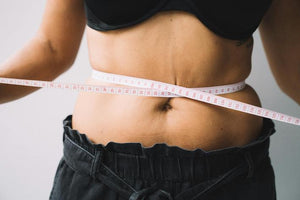Health is more than just the absence of disease. The World Health Organization (WHO) defines "health" as a state of complete physical, mental, and social well-being—for both men and women [1].
At Hello Inside, we want to help people place more value on their own health. Women's health is especially important to us.
This article gives you insight into the most important aspects of women's health and the female cycle. And, of course, we also address the topic of blood sugar.

Women’s health – a brief overview
You want to learn more about a specific health topic and look for a relevant article. Do you just read the article or do you look at the sources?
Women are underrepresented in clinical trials.
If you research various topics related to women's health and examine sources more closely, you'll notice the following: Study results are largely based on studies of men. Until the 1990s, women were underrepresented in studies . Therefore, there are hardly any differences in the treatment of diseases in women and men. However, metabolism functions differently. The consequences: misdiagnoses, incorrect treatments, or no diagnoses at all [2].
What areas does women’s health include?
Women's health varies in different forms and manifestations. While they are similar to those of biological men, they differ in therapeutic approaches due to hormones.
The following areas are part of women’s health:
- Sexual health: sexually transmitted infections and libido
- Menstrual problems and gynecological diseases (premenstrual syndrome, endometriosis and vaginal infections)
- Pregnancy, birth, pregnancy loss and postnatal support
- Reproductive health: (In)fertility
- Mental health: depression
- Metabolic diseases: diabetes mellitus, metabolic syndrome, polycystic ovary syndrome
- healthy aging and disease prevention
Did you know? Statistically, women live longer than men and, at the same time, spend a large portion of their lives suffering from illnesses and female-specific conditions. That's precisely why we want to highlight women's health and, above all, encourage you and other women to learn more about the female body [3].
Particularly exciting here is the connection between health and the female menstrual cycle – as well as the importance of blood sugar, which we will explain to you below.
What we should all know about the female cycle and hormones
Women's biology is complex and subject to constant change—especially when it comes to hormones. The infographic below provides a good overview of the female cycle.

The female cycle is more than just menstruation
Maybe you or your friends have experienced this. Many people only start talking about menstruation when their period starts. But the female cycle is more than just menstruation.
The average female cycle lasts 28 days and ends with the start of the next menstrual period. However, if your cycle lasts only 23 or even 35 days, that is still considered normal. [4].
The female cycle is divided into four phases
The female cycle consists of four phases. Depending on the phases, the amount of hormones in the blood also changes.
The female cycle runs in four phases:
- menstruation
- Proliferation phase (also called late follicular phase)
- Ovulation phase
- Luteal phase
The key hormones in the cycle are:
- estrogen
- progesterone
- Follicle-stimulating hormone (FSH)
-
Luteinizing hormone (LH)
Mood swings, fatigue, a burst of energy – you're probably familiar with all of these as symptoms of your cycle. Chances are it's due to your hormones. You'll learn more in this article . Let's take a closer look at the individual phases [5].
The first phase: menstruation
Each cycle begins with a period. This is the shedding of the uterine lining (endometrium), which has built up over time. This process lasts three to eight days.
During the first phase, the body produces increased levels of FSH and prepares for ovulation, while estrogen and progesterone levels are at their lowest. This usually causes you to experience less energy, cravings, and mood swings. Your sleep may also become more restless.
Our tip: Try to establish a healthy sleep routine. Aim to go to bed at the same time each night, and leave your smartphone, laptop, and TV at home in the evening. Gentle exercise, such as walking or yoga, has a positive effect on your well-being, your blood sugar, and even your period cramps.
The second phase: The proliferation phase
Now the FSH concentration stagnates. An egg cell matures from a so-called follicle, producing a lot of estrogen. This thickens the uterine lining, making it much easier for a potentially fertilized egg to implant later.
This phase can last up to seven days. During these days, you'll feel much more energetic and able to concentrate better thanks to the estrogen surge. How about a workout or more time with friends and family?
Good to know: During this phase, your body reacts a bit more sensitively to insulin. This means it can handle carbohydrates better. Learn later why stable blood sugar is important for your health [6].
The third phase: ovulation phase
Now estrogen levels reach their peak, and the phase begins with a hormonal bang. The brain receives the signal to stimulate the production of large amounts of LH: This hormone releases the egg, and ovulation ultimately occurs.
Estrogen keeps your energy levels high. The ovulation phase (also called ovulation) lasts two to three days.
Our tip: Now is a particularly good time to prevent premenstrual syndrome (PMS). Learn all the helpful tips in our article on PMS symptoms .
The fourth phase: luteal phase
When the luteal phase begins, the body breaks down LH and FSH and produces higher amounts of progesterone. This hormone also thickens the uterine lining, preparing your uterus for a possible pregnancy. If no egg is fertilized, progesterone production decreases, and estrogen levels also drop. Now everything starts again, and the uterine lining is shed: menstruation begins.
The female hormonal cycle is very sensitive.
Due to the constant hormonal fluctuations, your body goes through a lot. Unfortunately, your health can suffer as a result – especially if your blood sugar levels fluctuate significantly.
The good news is: You have control over your blood sugar levels and therefore also over your menstrual discomfort.
What role does blood sugar play in the menstrual cycle?
A perhaps unexpected, but extremely important aspect of your cycle is your blood sugar. Why? Your blood sugar level is one of the best biomarkers for measuring and ultimately improving your health.
When your hormone levels fluctuate, your blood sugar levels also become unbalanced, and vice versa. It's important to note that your blood sugar fluctuates throughout your cycle. For example, it tends to be slightly higher during the first few days of your period and shortly before. [7].
Note : It's perfectly normal for your blood sugar levels to fluctuate throughout the day. However, hormonal imbalances, an unhealthy diet, and external factors like stress can cause them to spike, which can impact your health.
How does your blood sugar affect your cycle?
Do you feel like your cycle dictates your daily life? It can be overwhelming when you don't know where to start for your well-being. One option is to check your blood sugar regularly.
We'll explain how your blood sugar affects the various symptoms that can occur during menstruation and what you can do about it.
Our tip for all of the following: A continuous glucose monitor (CGM) can help you monitor these steps. It will immediately show you when changes in your diet affect your body and thus your hormones.
Click here to learn how continuous blood glucose monitoring works.
Cravings and weight control
Cravings are probably one of the most common complaints of menstruating women. The ice cream or cookie packet can be empty in no time.
During the luteal phase, your body craves more energy because progesterone stimulates your appetite.
This is how you get your cravings under control.
In the second half of your cycle, you should also provide your body with more energy, but not in the form of foods loaded with sugar. Sweets and highly processed foods cause blood sugar to spike rapidly. This leads to increased insulin secretion, which then causes blood sugar to drop too low. As a result, you need energy quickly to recover from the energy slump. You know this as cravings. If you manage to avoid these cravings, it will be easier to maintain your weight. Because a continuously elevated insulin level makes losing weight more difficult.
Did you know? The more insulin you produce, the more estrogen production is inhibited, which can make your cravings worse.
Our tip: If you're craving sweets, try a small piece of dark chocolate, nuts, or yogurt with berries. These raise blood sugar slowly. Always include fiber , such as vegetables and whole grain products, in your diet, as these prevent cravings by having only a mild effect on blood sugar levels.
Sleep and mental health
Due to the hormonal changes during menstruation, pregnancy, and menopause, women often suffer from insomnia. Poor sleep can lead to serious health problems such as diabetes or heart disease in the long run. It also makes women more susceptible to mental health issues such as anxiety or depression [11].
The connection between sleep and blood sugar
If you sleep poorly, your day is usually ruined before it even begins. Poor sleep often leads to feelings of stress. In stressful situations, the body produces the hormone cortisol, which raises blood sugar levels. If you don't get enough sleep, your cravings for unhealthy food also increase. Over a longer period of time, you can gain weight, and being overweight makes your body less responsive to insulin. This means your risk of type 2 diabetes can increase.
That’s why it’s so important that you pay attention to healthy sleep hygiene [11], [12].
We have summarized the interaction between sleep and blood sugar in this article for you in an easy-to-understand manner.
In short – women’s health needs more education
You can't control all the hormonal changes in your body, but you can control your blood sugar levels. Now you know how your blood sugar levels change throughout the different phases of your cycle and how blood sugar can affect your long-term health. Now you can adjust your daily routine step by step to keep your hormone balance and blood sugar levels from getting out of control.
Unfortunately, education about women's health is still lacking these days. Many health issues are still downplayed. But we hope that we can expand your feminine superpowers and your knowledge with Hello Inside.
Take your health into your own hands now and start your journey with Hello Inside.
Sources
[1] “Constitution of the World Health Organization”. https://www.who.int/about/governance/constitution (accessed May 16, 2023).[2] BE Bierer, LG Meloney, HR Ahmed, and SA White, “Advancing the inclusion of underrepresented women in clinical research,” Cell Rep. Med. , Vol. 3, No. 4, p. 100553, March 2022, doi: 10.1016/j.xcrm.2022.100553.
[3] E. Ginter and V. Simko, “Women live longer than men”, Bratisl. Lek. Listy , Vol. 114, No. 2, pp. 45–49, 2013, doi: 10.4149/bll_2013_011.
[4] “Pschyrembel Online | Menstruation.” https://www.pschyrembel.de/Menstruation/K0E1U (accessed May 16, 2023).
[5] "Menstrual cycle," via medici: learn more easily - understand more . https://viamedici.thieme.de/lernmodul/543115/532528/menstruationszyklus (accessed May 16, 2023).
[6] S. Dey, D. Dasgupta, and S. Roy, “Blood Glucose Levels at Two Different Phases of Menstrual Cycle: A Study on a Group of Bengali-speaking Hindu Ethnic Populations of West Bengal, India,” Orient. Anthropol. , Vol. 19, No. 1, pp. 55–63, June 2019, doi: 10.1177/0972558X19835371.
[7] S. Zarei, L. Mosalanejad, and MA Ghobadifar, “Blood glucose levels, insulin concentrations, and insulin resistance in healthy women and women with premenstrual syndrome: a comparative study,” Clin. Exp. Reprod. Med. , Vol. 40, No. 2, pp. 76–82, June 2013, doi: 10.5653/cerm.2013.40.2.76.
[8] "Preeclampsia risk can be detected early." https://www.diabetes-deutschland.de/archiv/4874.htm (accessed May 16, 2023).
[9] M. Roser and H. Ritchie, “Maternal Mortality,” Our World Data , Nov. 2013, accessed May 16, 2023. [Online]. Available at: https://ourworldindata.org/maternal-mortality
[10] S. Mohamadirizi and M. Kordi, “The relationship between food frequency and menstrual distress in high school females,” Iran. J. Nurs. Midwifery Res. , Vol. 20, No. 6, pp. 689–693, 2015, doi: 10.4103/1735-9066.170000.
[11] “Stress and sleep,” https://www.apa.org . https://www.apa.org/news/press/releases/stress/2013/sleep (accessed May 16, 2023).
[12] “Sleep & Glucose: How Blood Sugar Can Affect Rest,” Sleep Foundation , December 4, 2020. https://www.sleepfoundation.org/physical-health/sleep-and-blood-glucose-levels (accessed May 16, 2023).






